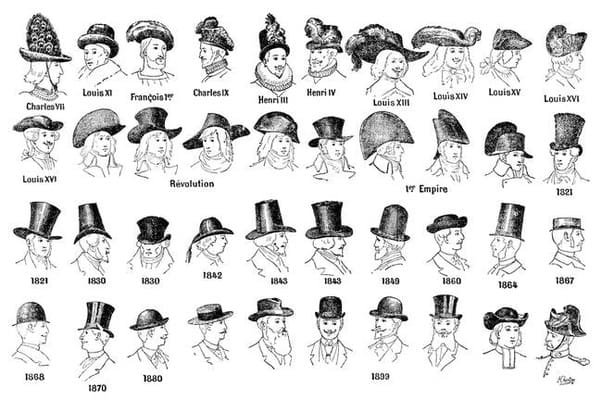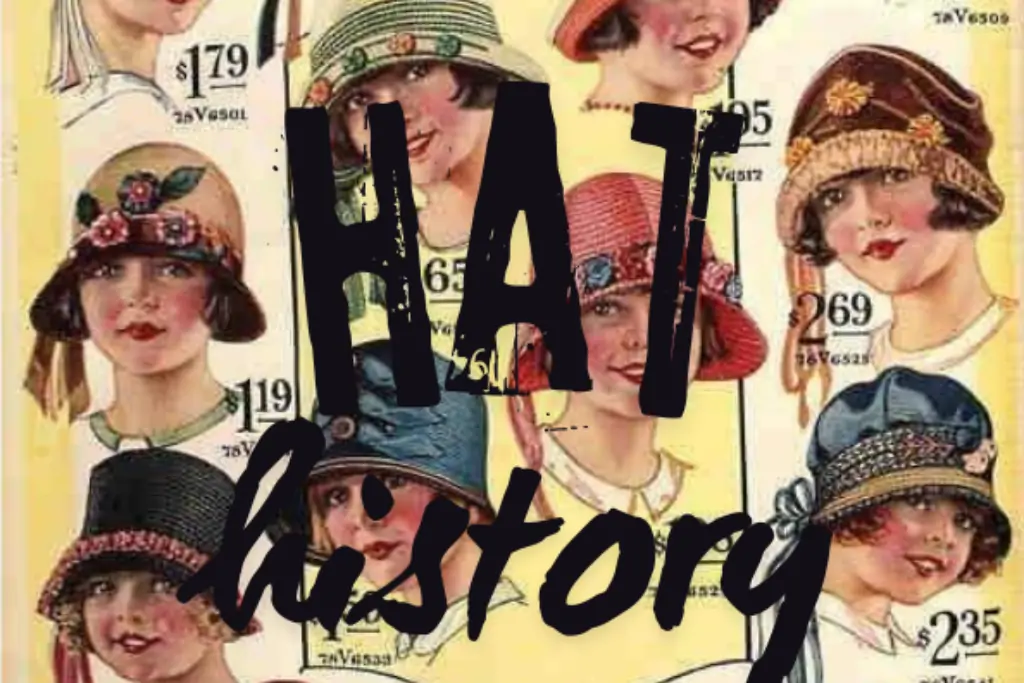Blog
The Evolution of Hats: From Function to Fashion
Hats have long been a staple of human attire, serving a variety of practical purposes throughout history. Yet, over time, they’ve evolved from being purely functional items to becoming one of fashion’s most influential accessories. From protecting one’s head from the elements to making bold style statements, hats have seen significant changes in shape, material, and purpose. This article takes you on a journey through the fascinating history of hats and explores how they have transformed from practical necessities to essential fashion statements.
The Origins of Hats: Function Over Fashion
The story of hats dates back thousands of years, with early examples primarily serving utilitarian purposes. The first known hats were simple, functional coverings made from materials like animal skins, straw, or fabric. Ancient civilizations, including the Egyptians and Greeks, used hats for protection from the sun and cold. In ancient Egypt, for example, people wore linen head coverings called “nemes” to shield themselves from the harsh desert sun, while in colder regions, fur-lined hats kept the heat in and the cold out.
Hats also had symbolic meanings. In Ancient Greece, the petasos hat, a broad-brimmed style often worn by travelers, denoted a man’s social status. Similarly, in medieval Europe, hats such as the coif or the hennin were worn to signify social class, marital status, and wealth. These early hats were, for the most part, functional but were also used as a signifier of status or identity.

The Renaissance: The Rise of Fashionable Headgear
By the Renaissance, hats began to take on a more fashionable role in society. Elaborate headpieces became symbols of wealth, power, and fashion. In Europe, the coif evolved into more decorative hats adorned with jewels, feathers, and intricate fabrics. The addition of feathers to hats became particularly popular in Italy, where they symbolized nobility and sophistication.
During this time, men and women alike donned hats as a sign of elegance. Women wore towering headdresses, often with elaborate designs, while men wore more restrained but still stylish versions like the beret, flat cap, and broad-brimmed hats. The Renaissance period marked a turning point in the evolution of hats, where their function of protecting the wearer was matched by an increasing focus on aesthetic appeal.
The 17th and 18th Centuries: Hats as Status Symbols
By the 17th century, hats had become integral to the status and fashion of the wealthy elite. This was especially true in France, where the extravagant wigged hats of the French court, such as those worn by Louis XIV, became iconic. At the same time, the tricorn hat became synonymous with European aristocracy, particularly during the Age of Enlightenment.
In the 18th century, the rise of the powdered wig gave way to the top hat, a style that would remain an enduring symbol of class and refinement for centuries. The top hat became particularly associated with formal attire in Britain and the United States, worn by politicians, businessmen, and society’s upper crust.
These styles continued to evolve into the 19th century, where hats like the bowler and derby hats, which were favored by the middle class, came into prominence. The 19th century was a period of industrialization, and the introduction of machines allowed for mass production of hats. This accessibility brought hats to a wider audience, but they still held strong associations with social status and class divisions.
The 20th Century: Hats Become Iconic Fashion Pieces
The 20th century marked a period of significant change in the role of hats in fashion. Early in the century, hats were still worn by both men and women for practical purposes, particularly in Western cultures. Women’s fashion saw the popularity of the cloche hat in the 1920s, a close-fitting style that encapsulated the sleek, modern look of the Roaring Twenties. During this time, hats were a quintessential part of a woman’s daily ensemble, with hats like the feathered fascinators and pillbox becoming popular accessories.
For men, hats like the fedora, trilby, and panama continued to serve as symbols of sophistication and status throughout the 1930s and 1940s. These hats were particularly popular in the world of film, as they were worn by leading men like Humphrey Bogart, Frank Sinatra, and Cary Grant. The fedora, in particular, became a staple in the wardrobes of Hollywood stars, helping cement its status as an iconic fashion accessory.
However, by the mid-20th century, the wearing of hats began to decline in everyday life. As more casual dress codes became the norm, especially in the 1960s and 1970s, the necessity of hats diminished. The rise of the counterculture movement saw hats as an unnecessary accessory, and many people, particularly in the United States, abandoned them altogether.
The Modern Day: Hats as Fashion Statements
Today, hats have largely moved away from being everyday necessities to becoming statement pieces and an essential part of high fashion. While they no longer serve the same practical purpose as they did in centuries past, hats are still used to express individuality, style, and personality. With the resurgence of vintage fashion, many of the iconic hat styles from the past century have made a comeback. From the wide-brimmed boater hats of the early 20th century to the modern beanies and snapbacks, hats now transcend gender and social class.
In recent years, hats have also found their place in streetwear, with the popularity of baseball caps, bucket hats, and trucker hats growing among younger generations. These casual styles have evolved into symbols of self-expression, with many sporting hats to represent their favorite brands, sports teams, or personal style.
Fashion designers and influencers have also embraced hats as bold accessories. On runways, wide-brimmed hats, berets, and embellished headpieces are often featured as part of high-fashion collections. Celebrities like Rihanna, Kate Middleton, and Harry Styles have been spotted wearing hats that push the boundaries of traditional headwear, showing that hats can be versatile and stylish no matter the occasion.

Conclusion: Hats as an Evolving Fashion Staple
The evolution of hats from functional accessories to fashionable statement pieces reflects broader changes in society, culture, and fashion. From their origins as sun shields and status symbols to becoming iconic components of style, hats have proven their adaptability and importance in the world of fashion. Today, they continue to be an essential part of personal style, offering endless opportunities for self-expression.
Whether it’s a wide-brimmed hat for a chic day out, a fedora for a dash of sophistication, or a bucket hat for a fun, casual look, hats remain timeless accessories that can elevate any outfit. As trends evolve, it’s clear that hats will continue to play an important role in fashion, constantly transforming and reinventing themselves to suit the changing tastes of each era.


